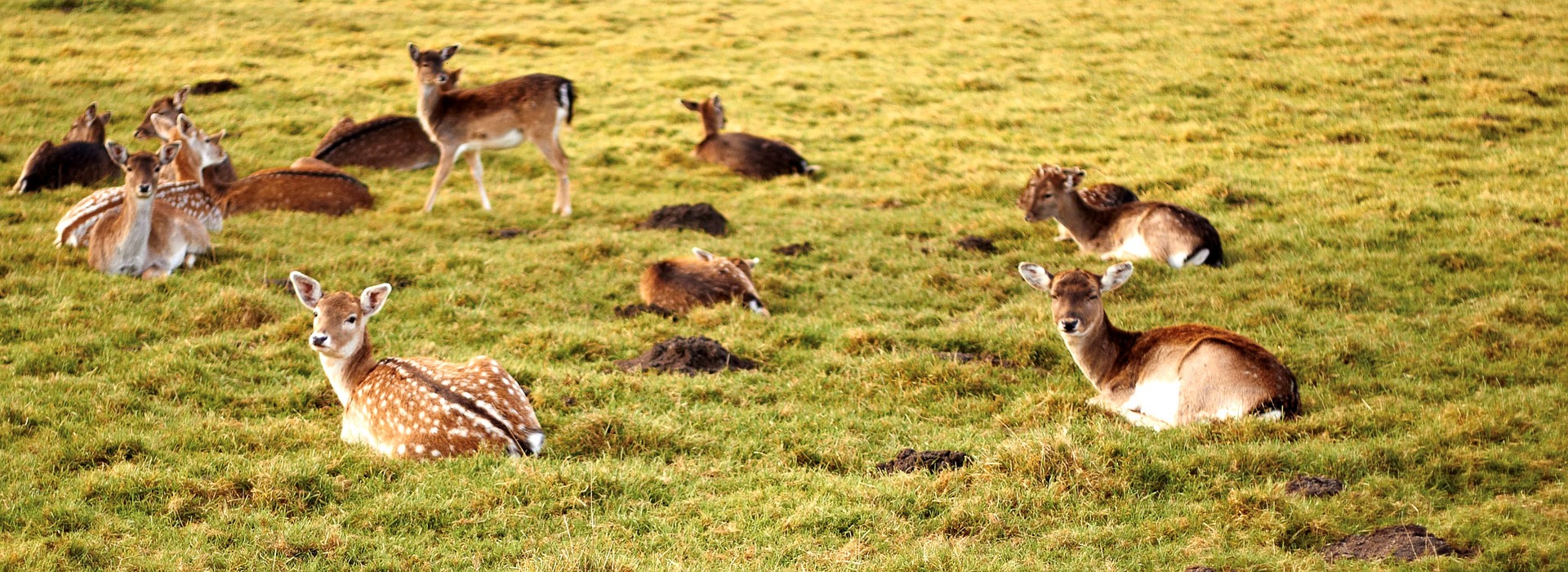Chronic Wasting Disease

Chronic Wasting Disease (CWD) is a slow but progressive, fatal disease of the nervous system in free-ranged mule-deer and farmed white-tail deer known to affect the deer (cervid) family: white-tailed deer, mule deer (elk), and moose. It is transmitted animal-to-animal via shedding of the infectious agent in the feces and saliva. Deer with CWD will show signs of the disease for several weeks or months before they die and are usually within the 3-4-year age group.
CWD was first reported in Colorado in 1967 and has since been discovered in 24 U.S. states as well as internationally in South Korea and regions of Canada. 2017 is the 50th year anniversary of the first discovery of CWD.
Chronic Wasting Disease is caused not by a bacterium such as Lyme Disease, or a virus, but by a deformed protein called Prion. (Until recently though, prion diseases were known to affect livestock and humans, but not wildlife animals.) Some plants and land areas carry prion proteins; and it's thought by researchers that if we eliminate landscapes with these deformed proteins, then maybe we can eliminate Chronic Wasting Disease.
The disease belongs in the family of diseases called transmissible spongiform encephalopathies (TSE) and only harms this family of wild animals - or so research displayed until recently in 2017. As far as we know, it is not transmittable to herd members outside of the cervid family.
The problem arises.

In 2002, CWD was found 40 miles from the Maryland border in Pennsylvania. Because of this finding, and others along the way, researchers believe that the outbreak of CWD in the Northeast region came from West Virginia and Maryland and has since been in high alert in southern Fulton and Bedford counties in Pennsylvania.
CWD has been detected in captive and free-ranging deer and elk in 23 states and two Canadian Provinces: Colorado, Wyoming, Saskatchewan, South Dakota, Nebraska, Montana, Wisconsin, New Mexico, Minnesota, Oklahoma, Illinois, Alberta, Utah, New York, West Virginia, Kansas, Michigan, Virginia, Missouri, North Dakota, and Mississippi.
Research in Wisconsin believes that agriculture landscapes may have something to do with the spread of Chronic Wasting Disease; and where the deer population live may spread twice as fast in some landscape settings.
"CWD seems to be moving in association with some of our landscape features," says Katherine Richgels, applied wildlife health research branch chief for the National Wildlife Health Center. "It's more likely to move through denser forests, and it seems to be blocked to some degree by the river corridor, moving fast along the one side but not crossing it."
In fact, research out of the University of Illinois College of Agriculture suggests that certain soils, such as clay, may affect the spread of Chronic Wasting Disease.
"The study found an association with high amounts of clay in soil and a drop in the number of CWD cases noted in a particular area." (Daily Mail) When soil is comprised with at least 18 percent of clay, there is a good chance that CWD numbers significantly reduce.
In 2018, Wisconsin DNR approved changes for deer farms to prevent the spread of Chronic Wasting Disease. The rule calls for deer farms that have had a CWD infection to install a second fence or solid barrier. CWD-free farms would have three options: add a second fence, add a solid barrier or add an electric fence. Farmers would have a year to comply.
The problem grows
What was once thought as a problem only for the deer family has raised alarm for humans. Canada's Health Products and Food Branch issued out a 2017 advisory stating that humans may be infected with CWD if they ingest venison that has ties with CWD. Although the report was written for Canadian farmers and landowners, the report does address the concern for homeowners and farmers within the United States.
Individuals who have eaten venison infected with CWD have experienced anxiety, tremors and ataxia.
Deer Symptoms of Chronic Wasting Disease
Deer farmers and deer breeders should watch herds of deer and test them for CWD. Be on the look-out for the following symptoms:
- depression;
- difficulty swallowing;
- excess salivation;
- increased thirst;
- lack of coordination;
- paralysis;
- pneumonia;
- separation from the other animals in the herd;
- unusual behavior;
- excessive urination; and
- weight loss
CWD sampling and registration should be performed for deer that are suspected of having the disease. If the disease is present on the farm, it's possible that the deer farm may be quarantined in the interim until it is declared safe for business. The [possibly] infected deer may need to be taken away or set aside in a deer fence for observation. Contact your local game and wildlife commission with any questions.
